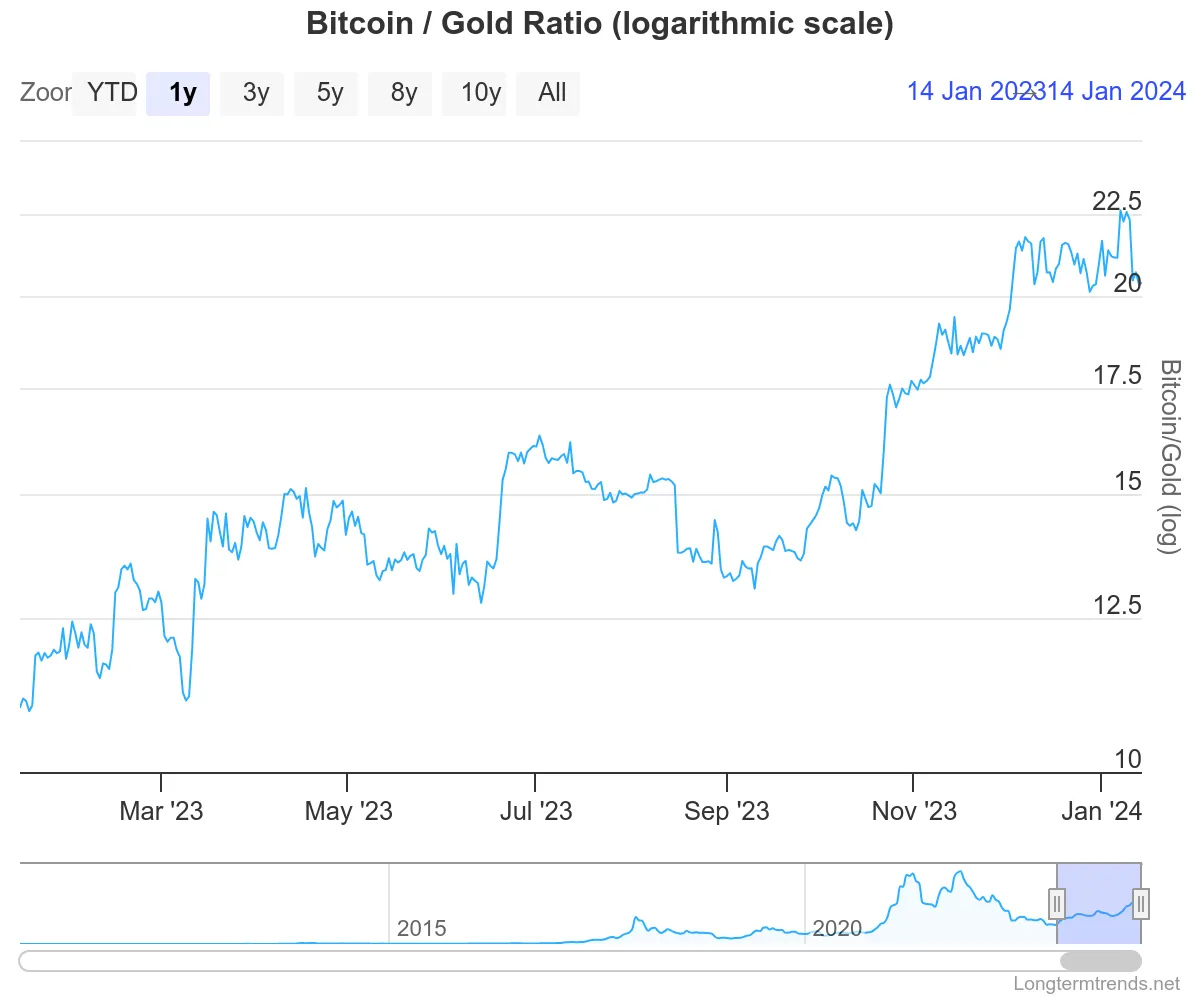Bitcoin Correlation to Gold Nears All-Time High as ETFs Hit Wall Street
2 years ago admin
The correlation between Bitcoin and gold prices has climbed to new heights in recent months after a bullish close to 2023 and the approval of a spot Bitcoin ETF.
Bitcoin’s correlation to gold has fluctuated during much of the digital asset’s history. This means the two assets’ prices have moved mostly independently—when one rose, the other didn’t necessarily follow. But the correlation grew tighter after the market crash in 2020 at the start of the COVID-19 crisis, and it’s now once again approaching historical levels.
The Bitcoin to gold correlation currently stands at 0.76 (or 76%). A correlation of 1 means there is a perfect, positive correlation between two variables, in this case the price of Bitcoin and gold (-1 would mean a perfect, negative correlation). And while the Bitcoin-gold correlation is not yet at all-time levels, it’s now getting closer.
“Bitcoin’s relationship with [traditional finance] markets has been consistently evolving,” cryptocurrency exchange Binance noted in a report published earlier this month. “Currently, Bitcoin’s correlation with the S&P 500 is at its lowest in more than three years.” Bitcoin correlation to gold witnessed a notable surge, sitting at approximately 75% by the end of 2023, according to Long Term Trends. This peak coincided with global central banks adopting interest rate hikes, signaling a temporary shift in stock market behaviors.
The introduction of Bitcoin ETFs in the U.S. market last week also marked a watershed moment, heralding Bitcoin’s transition to a stock-like asset.
Despite this, Bitcoin’s kinship with gold has only strengthened, and the bitcoin-gold correlation today sits at 76%, only a few points behind the all-time high of 79%. That suggests a tightening relationship between the two assets (both considered a strong storage of value by their proponents), even as Bitcoin inhabits more aspects of mainstream finance.
The charts also show Bitcoin’s ratio to gold climbing steeply throughout 2023, peaking towards the year’s end before a slight retracement earlier this month, likely as the hype around ETFs faded. The Bitcoin to gold ratio is a metric that results from dividing the price of Bitcoin by that of gold, which tells us roughly how many ounces of gold can be purchased with a single Bitcoin.
At its zenith, the ratio touched an impressive 22.5, meaning 22.5 ounces of gold could be purchased with 1 BTC. The figure demonstrates the purchasing power of Bitcoin relative to gold, reaffirming the belief among the Bitcoin faithful that BTC provides a reliable store of value.

But why would Bitcoin gain greater alignment with gold, particularly when Bitcoin’s entry into the stock market via ETFs suggested a shift towards a correlation with equities? It appears that despite these stock-like characteristics, investors may still be seeking solace in Bitcoin’s gold-like qualities.
With the U.S. inflation rate lingering above the desired Federal Reserve target of 3.35%, and Bitcoin’s stellar 155% spike in 2023, the narrative seems clear. Investors are not just chasing growth; they are also seeking stability in the face of economic uncertainty. Bitcoin, with its gold-like performance, offers a semblance of this stability.
The Bitcoin-gold kinship highlights the complex, shifting nature of Bitcoin as both a digital currency and an asset class. As it matures, Bitcoin appears to be retaining select qualities of gold while also absorbing traits of stocks and commodities.















